EcoExplorer: Our Cottonwood Stump
Discover the story of a majestic Eastern Cottonwood tree
The Eastern Cottonwood
Welcome to one of the most fascinating spots in our nature center—the stump of a majestic Eastern Cottonwood tree (Populus deltoides). Though this tree is no longer standing, its stump tells a remarkable story of growth, life, and the passage of time.
Eastern Cottonwood trees are among the fastest-growing trees in North America. They can grow 4-5 feet per year in ideal conditions and can reach heights of 100 feet or more. This particular tree stood as a sentinel in our preserve for approximately 75 years, as evidenced by the tree rings visible in its stump.
For Indigenous peoples of North America, cottonwood trees held deep spiritual significance. The Lakota people considered the cottonwood sacred, using it in Sun Dance ceremonies. The tree's heart-shaped leaves were seen as a symbol of the Great Spirit's love for all creation. When you cut across a cottonwood branch, you can see a five-pointed star—a natural feature that many tribes saw as sacred.
Tree Ring Timeline
This timeline shows the 75-year life story of our cottonwood tree, with each ring marking significant historical events that occurred during the tree's lifetime.
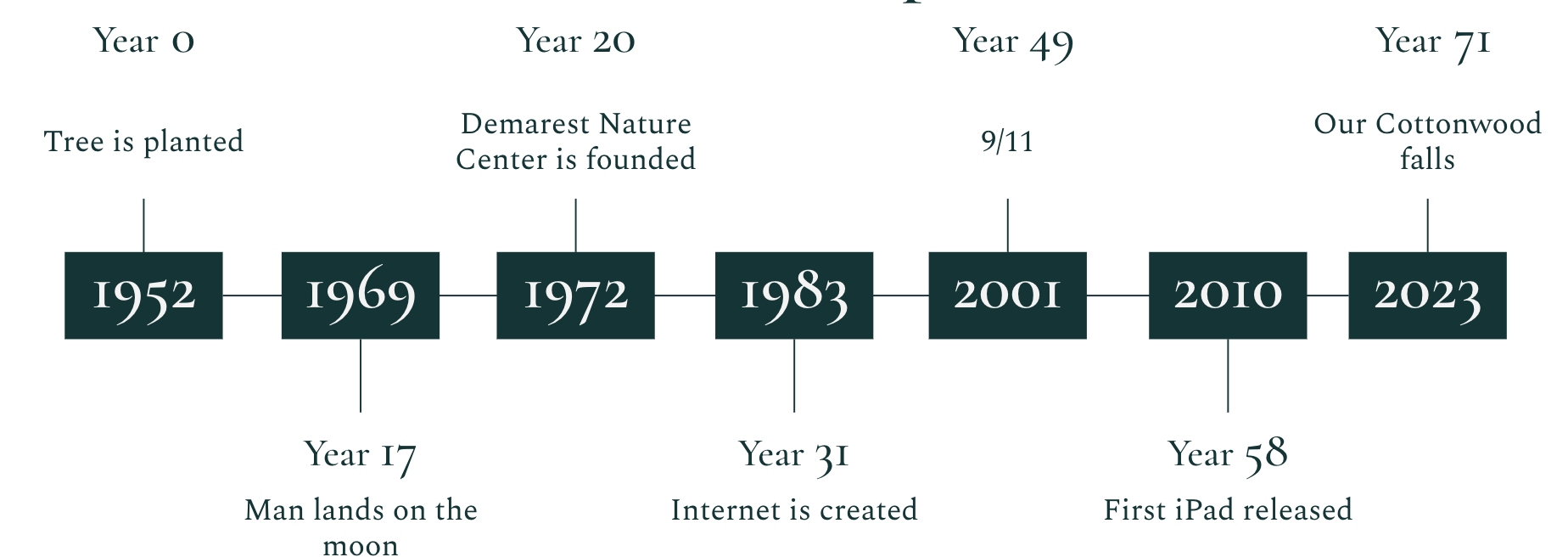
Image Gallery
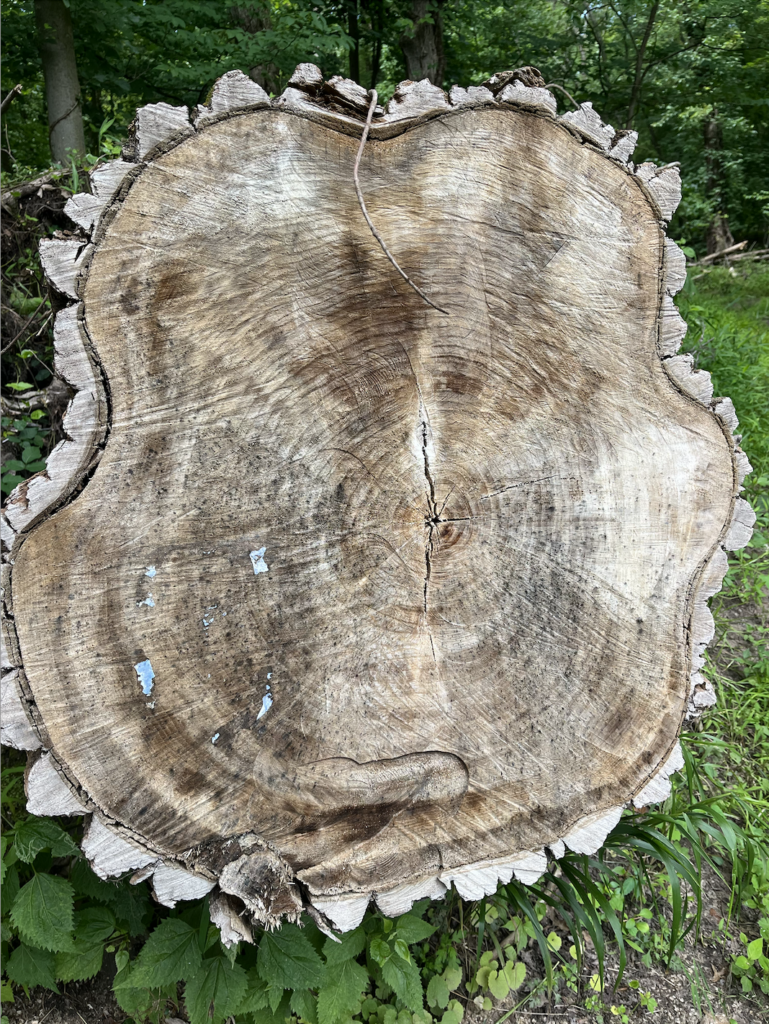
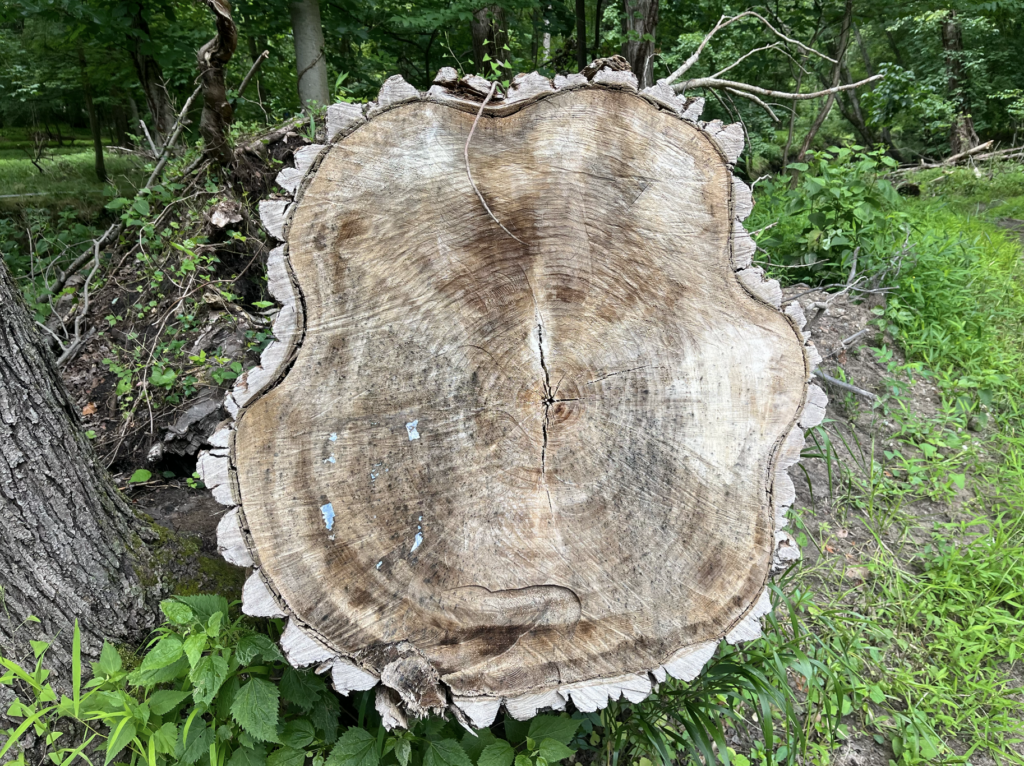
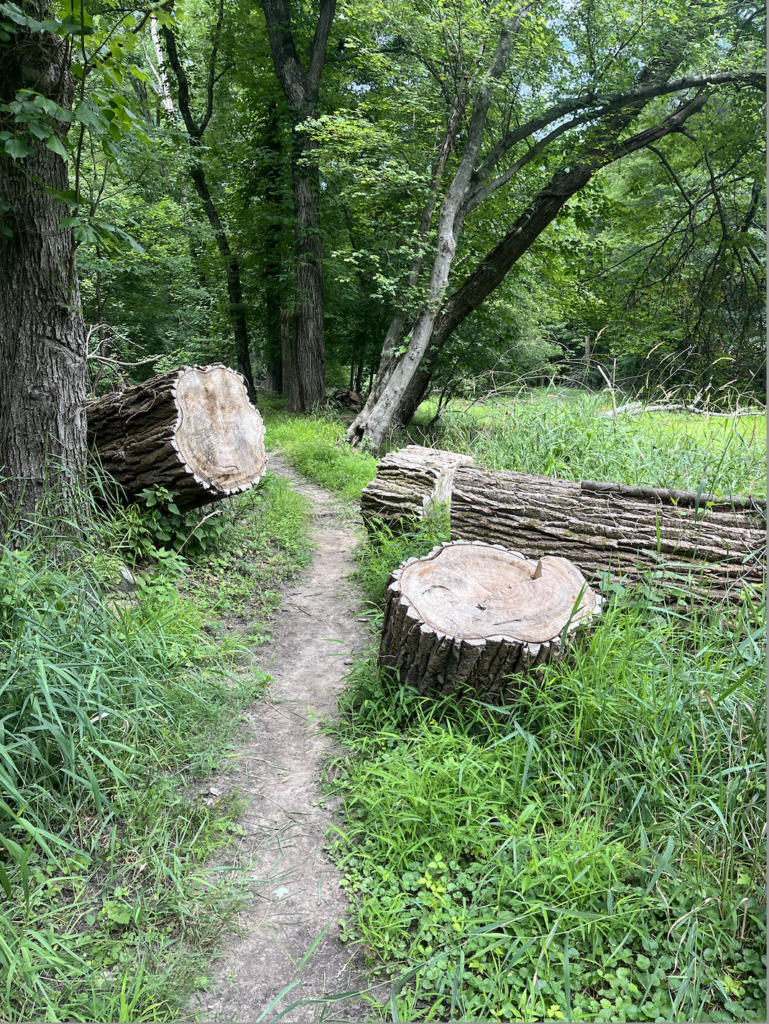
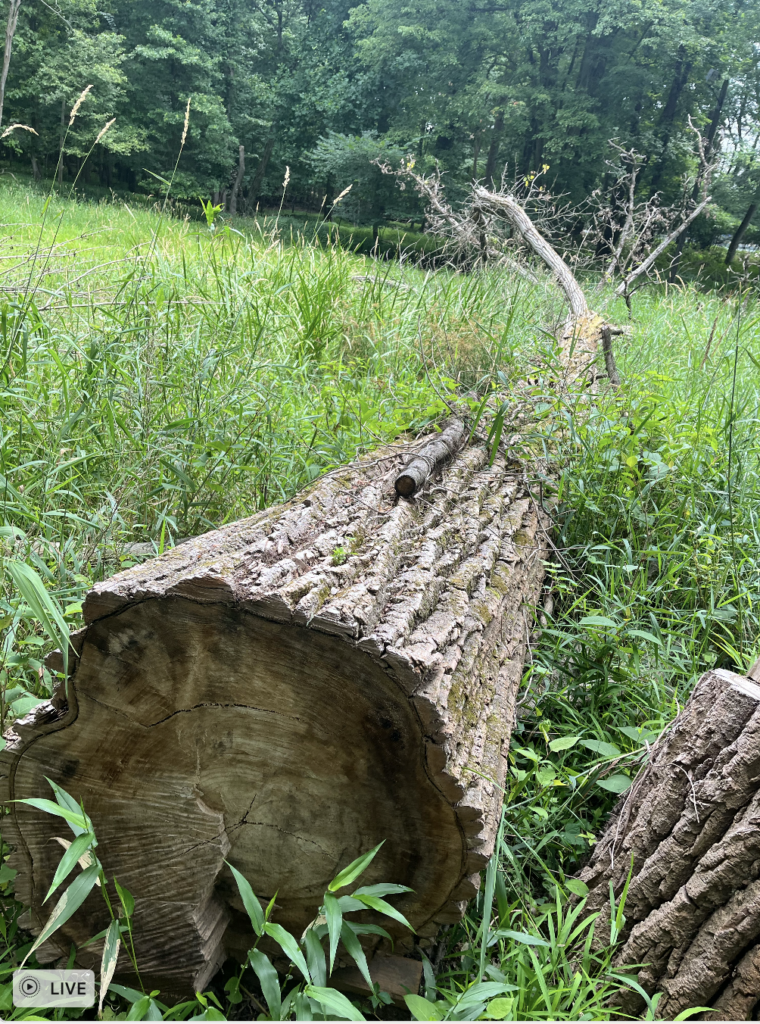
How to Identify an Eastern Cottonwood
- Leaves: Large, triangular to heart-shaped leaves with coarse teeth along the edges. They turn bright yellow in fall.
- Bark: Thick, deeply furrowed gray bark on mature trees. Younger trees have smooth, greenish-gray bark.
- Seeds: Tiny seeds surrounded by cottony white fluff—hence the name "cottonwood." In late spring and early summer, this fluff fills the air like snow.
- Habitat: Cottonwoods love water and are typically found near streams, rivers, and wetlands.
- Growth: One of the fastest-growing native trees, capable of growing several feet per year.
Kids' Corner: Count the Tree Rings!
When you visit the cottonwood stump, try counting the rings! Each ring represents one year of the tree's life. Wide rings mean the tree grew a lot that year (probably because of good weather and plenty of water), while narrow rings show years when growth was slower (maybe because of drought or cold weather).
Can you count all 75 rings? It's like reading the tree's diary!
Kids Video: Learn About Cottonwood Trees
Song: "Cottonwood Tree"
Enjoy this beautiful song celebrating the cottonwood tree
